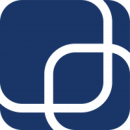A new year has arrived, but was everyone invited to celebrate?
Long-overdue resolutions of creating a diverse workplace have been made and announced, but the question of who will follow through continues to loom. The conversation around diversity, equity and inclusion (DEI) in tech is intensifying from all angles, and as we head into 2022, it is high time for companies to put their money where their mouth is.
It has been proven that in order to develop products and services that resonate with a diverse audience, that same level of diversity needs to be included in all stages of the production process. A 2021 study by TopDesignFirms discovered that 64 percent of consumers are at least somewhat likely to make an immediate purchase after seeing an advertisement showcasing diversity, and 67 percent of consumers are likely to make a second purchase from a brand or company that they believe is committed to diversity and inclusion. Furthermore, the study found that if two companies offer the exact same product, over one third of consumers would consider each brand’s commitment to diversity and inclusion when making their final decision on which to purchase.
Diversity and equity are no longer afterthoughts, and consumers are becoming progressively more interested in the values of the companies they support. Built In New York caught up with five leaders in the industry to discuss their commitment to diversity, equity and inclusion in 2022 — and how they plan to deliver.
What’s one way you’re committing to improving diversity, equity and inclusion at your company in 2022?
We are strategically focused on raising the bar across the organization with a specific focus on cultural competence. As a global organization, we have the responsibility and opportunity to operate with an acute awareness of diversity, equity and inclusion. The more we raise our own critical awareness of what inclusion asks of us, the more successful we will be as collaborators, innovators and leaders.
The more we raise our own critical awareness of what inclusion asks of us, the more successful we will be as collaborators, innovators and leaders.”
What do you plan to do to fulfill this commitment? And how is leadership supporting these efforts?
We will focus these efforts in two specific areas. From a social and cultural frame, we will roll out and scale four new custom-designed DEI learning and development courses. These courses will focus on areas that encourage greater awareness around one’s own intersectional identity, unconscious bias, historic inequity, coalition building and inclusive leadership.
We will also begin to implement an inclusive hiring strategy to support these efforts systematically. We will work with our hiring teams to support bias mitigation throughout our recruitment and hiring processes. Take-Two has always had a focus on hiring the best, and we understand how critical it is to attract and recruit talent that understands and can contribute to the local and global communities that we work within and entertain.
This is a goal that has been driven by and supported by Strauss Zelnick, our CEO, as we consistently focus our efforts on being the most creative, the most innovative and the most efficient entertainment company. We recognize how imperative it is that we keep diversity, equity, and inclusion in focus to succeed at our mission.
Why have you decided to make this commitment a priority this year? And how are you holding yourself accountable to it?
As the inaugural DEI leader for Take-Two, this is a critical step in our DEI journey that will allow us to share a common language and operate with greater awareness as a community. In doing so, we will be better positioned to identify and reach our future DEI goals.
Accountability and collaboration is critical in this work, which is why we choose to share our goals and remain transparent about our progress. We will utilize metrics of assessment to measure impact, ensuring that our efforts are supporting the learning and development that is most meaningful to our internal and external community members.
What’s one way you’re committing to improving diversity, equity and inclusion at your company in 2022?
Over the last year, we have been on a very intentional journey toward creating a diverse and inclusive workplace — a place where all Onners can show up exactly as they are and be set up for success in their roles. Helping all employees maximize their career opportunities is one of our main drivers.
We started our journey by reviewing how we work — looking at every single policy, process and workflow with an eye toward inclusivity. Knowing where our journey starts and building from there is paramount for a sustainable solution. Once we understood the status quo, we were able to address specific areas with proactive solutions, like partnering with DEI consultants, promoting DEI through talent acquisition and developing more inclusive career development frameworks.
In 2022, we plan to continue our journey with the creation of a Diversity Council that will guide Onna’s DEI efforts for years to come. This will include areas such as building ERG communities, expanding our teams with diverse candidates and building new processes that support DEI.
Helping all employees maximize their career opportunities is one of our main drivers.”
What do you plan to do to fulfill this commitment? And how is leadership supporting these efforts?
As important as DEI is to us, it is even more important that diversity-related initiatives are built on a strong foundation, developed with care, experience and expertise — and with longevity in mind. This is why we have partnered with an external organization specializing in DEI to help shape our strategy. We have a stated company-wide goal of ensuring that Onna is an inclusive and diverse organization, and senior leadership is either directly driving individual work streams, or supporting as executive sponsors. It truly is a team effort.
Why have you decided to make this commitment a priority this year? And how are you holding yourself accountable to it?
DEI in the workplace is absolutely non-negotiable. It should be reflected in every fiber of an organization and help empower employees across the world to bring their entire selves to work. Simply having a DEI initiative is table stakes — it must be treated as a priority and there has to be accountability. At Onna, we have formalized company-level priorities tied to DEI, and those are driven by strategic and tactical work streams that we update weekly to ensure continued progress.
What’s one way you’re committing to improving diversity, equity and inclusion at your company in 2022?
Braze recently created a Social Impact department, which will be overseeing Corporate Social Responsibility (CSR) and Diversity, Equity and Inclusion (DEI) initiatives, under the pillars of community, education and sustainability. These two programs will work in parallel to make a larger overall impact. One example of these two programs working in tandem is our Tech for Black Founders program, which provides Black-founded businesses with our technology for free, and also makes an impact among an underserved and underrepresented community.
We will look to measure the success of the Social Impact department in a few key ways. Firstly, our biannual employee engagement survey will help us assess the culture of Braze and how inclusive it is to employees from all backgrounds. Secondly, our overall employee numbers will be monitored as we continue to grow, ensuring Braze has representation across key DEI segments such as gender, race and ethnicity, caregiver status of children or adults, and age among other inputs. Lastly, we will measure the overall impact we’re making throughout our ecosystem. We hope to shape the future through this new department and are excited about the work ahead.
What do you plan to do to fulfill this commitment? And how is leadership supporting these efforts?
DEI is a team effort, and if only one department is working on this as an initiative, it will fail. The social impact department will partner with all departments across the organization to work on DEI together. We will look to use various inputs, both qualitative and quantitative, to help us understand our DEI health. Through this discovery process, we will identify where we need to do better and work with each department on an ongoing basis to address any issues in a lasting and scalable way by updating our business processes.
Company leadership is in full support, which is why we created a new department focused on DEI with real resources.
DEI is a team effort, and if only one department is working on this as an initiative, it will fail.”
Why have you decided to make this commitment a priority this year? And how are you holding yourself accountable to it?
Braze achieved two big milestones in 2021. In October, we surpassed 1,000 employees across eight different offices in three different regions. We also became a publicly traded company in November. The company will continue to grow and scale in 2022 and beyond, and we believe it is the right time to invest in the foundations to help us shape the future in a positive and meaningful way.
As this is a new department, we are still in discovery mode. Once we have a better understanding of DEI at Braze, we will look to set DEI metrics at the company level and in coordination with each department. Braze uses objective key results (OKRs) as a framework to set quarterly goals and measure the achievement of those goals. We will apply the same framework to help us meet our goal of representing and impacting the communities where we have a presence.
What’s one way you’re committing to improving diversity, equity and inclusion at your company in 2022?
At Dataminr, we’re committed to continually reassessing and evaluating our hiring and growth processes to ensure that our environment is not just diverse, but equitable and inclusive. For hiring, we’ve begun a deep assessment of our current candidate journey practices and supporting technologies. This initiative helps us to determine where bias vulnerabilities may exist, how we can eliminate opportunities for it to proliferate, and educate our global teams on the various ways biases can appear.
What do you plan to do to fulfill this commitment? And how is leadership supporting these efforts?
Accountability is what makes our DEI programs successful, as evidenced by the commitment of our leadership team. It has made DEI central to Dataminr’s business strategy and embedded DEI initiatives into our company goals. As achieving true DEI is a journey not a destination, our leadership team ensures that there are continuous investments — at both the individual and organization level — in realizing our DEI values.
What that looks like varies, but the goal is the same — to ensure our employee and candidate experiences are consistently diverse, equitable and inclusive. This includes providing training and education on removing bias from the hiring and management process. As an extension of this — and as part of our company’s rapid international expansion — we’re focused on recruiting from diverse talent pools and developing internal talent so we can promote from within and increase representation from all levels of the organization. Most importantly, we hold ourselves accountable by regularly measuring our progress and being as transparent as possible about how and what we measure as well as the outcomes.
Inclusivity is difficult to measure, but easy to identify when it’s not a core part of a company’s culture.”
Why have you decided to make this commitment a priority this year? And how are you holding yourself accountable to it?
Inclusivity is difficult to measure, but easy to identify when it’s not a core part of a company’s culture. This commitment came about because it’s simply the right thing to do. Dataminr is growing rapidly, but thoughtfully. This means taking a step back and looking at how we can scale inclusivity, agility and all the qualities that make up for a healthy, global workforce. We hold ourselves accountable with internal reports on our growth and diversity. In fact, we were recently excited to report in Q3 that 42 percent of Dataminr’s global workforce is female-identifying. To put that in perspective, female employees make up between 29 percent and 45 percent of the total workforce at some of America’s largest tech companies. Being transparent with our team about where we have room to grow is how we choose to hold ourselves accountable.

What’s one way you’re committing to improving diversity, equity and inclusion at your company in 2022?
We will not give up on our quest to build a more diverse, equitable and inclusive workplace where folks feel a sense of belonging and do their best work. We improved our numbers drastically in the last 12 months, but our diversity focus for 2022 will continue to be on a few crucial areas that are still lagging behind. Engineering, leadership, and management roles will be our focus when it comes to bettering representation from underrepresented groups.
Our goal in 2022 is to end up with a 50 percent-plus female workforce (currently at 42 percent) and a 30 percent female engineering team by EOY. We want to achieve a minimum of 35 percent female and 30 percent POC representation for IC4/managerial level (and above) to ensure we don’t simply fill the entry-level roles with talent from underrepresented groups — we want to actually make changes at all levels of the business. This is not a tick box exercise for us; we are working on this because it matters.
This is not a tick box exercise for us; we are working on this because it matters.”
What do you plan to do to fulfill this commitment? And how is leadership supporting these efforts?
To ensure we improve on our representation and diversify our talent in engineering and senior roles, we are putting specific goals in place for 2022 and will continue to measure our progress against them as People Team KPIs. We will also keep working towards making our environment inclusive by continuing to allow the space for all voices to be heard, keeping our channels open (of which, there are many — from All Hands to AMAs and Open Office Hours), celebrating a wide array of occasions that matter to our people, and co-creating events and learning and development opportunities that are inclusive and accessible to all.
To ensure equity, we will continue to source for underrepresented groups for all of our roles, making sure our interviewing process takes into account that not everyone starts from the same place. Education is a big part of how we plan to be successful, so continuing to educate folks on the importance of inclusive hiring, speaking on topics such as bias, and bringing in external speakers to show us our blind spots will be crucial. We are #AlwaysLearning.
Why have you decided to make this commitment a priority this year? And how are you holding yourself accountable to it?
This is an ongoing commitment, so nothing new. We started small and are now building on what we’ve achieved, one step at a time. DEI efforts are tracked as People Team KPIs, and in 2022 we will be doing more to make these accessible company-wide for everyone to see, hold us accountable and contribute towards. Improvements and commitments to DEI must be a company-wide effort and for that to be true, we need to do more work when it comes to educating people-managers and leadership. Unless everyone is on board, we fail as a team.














